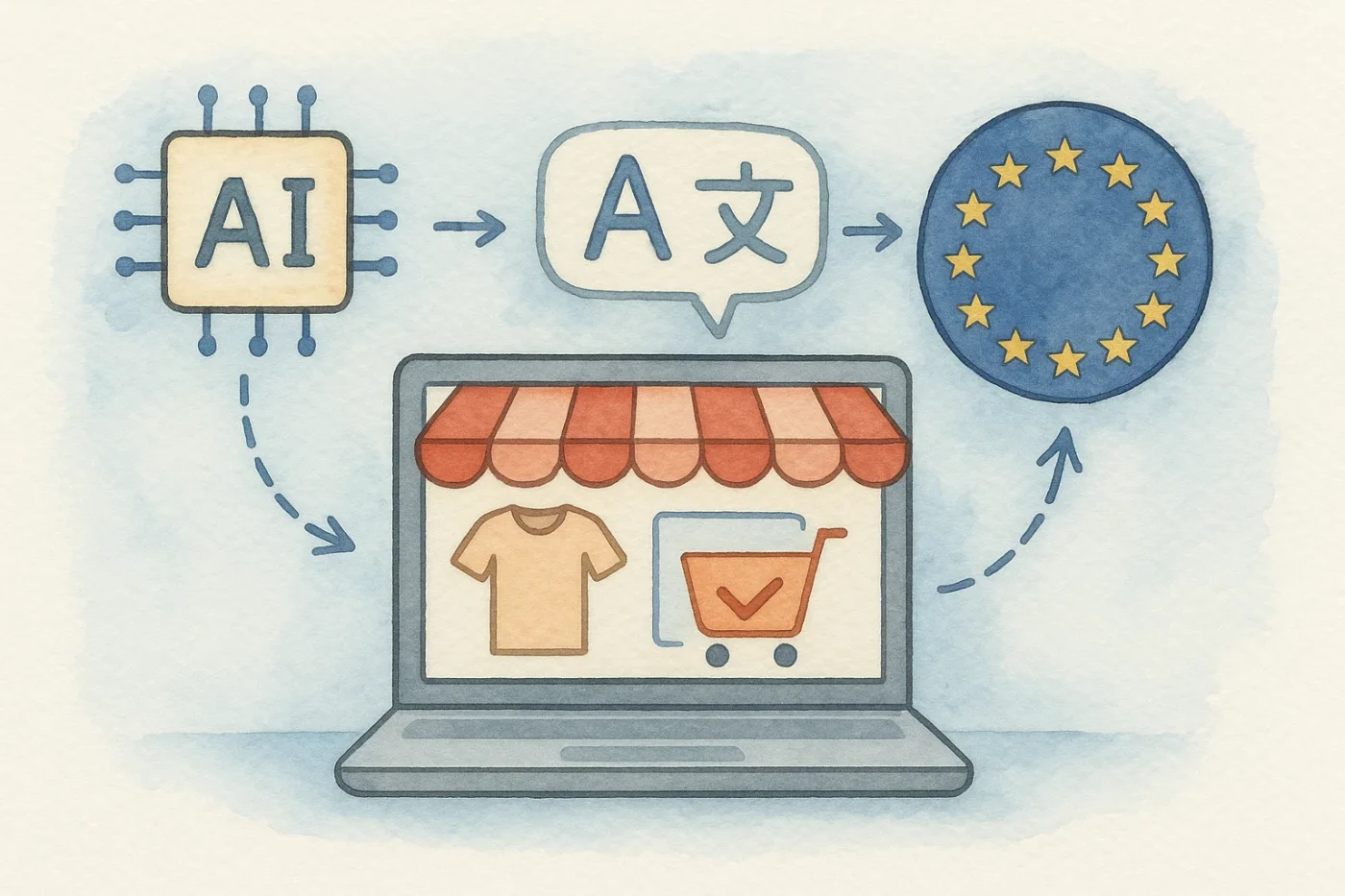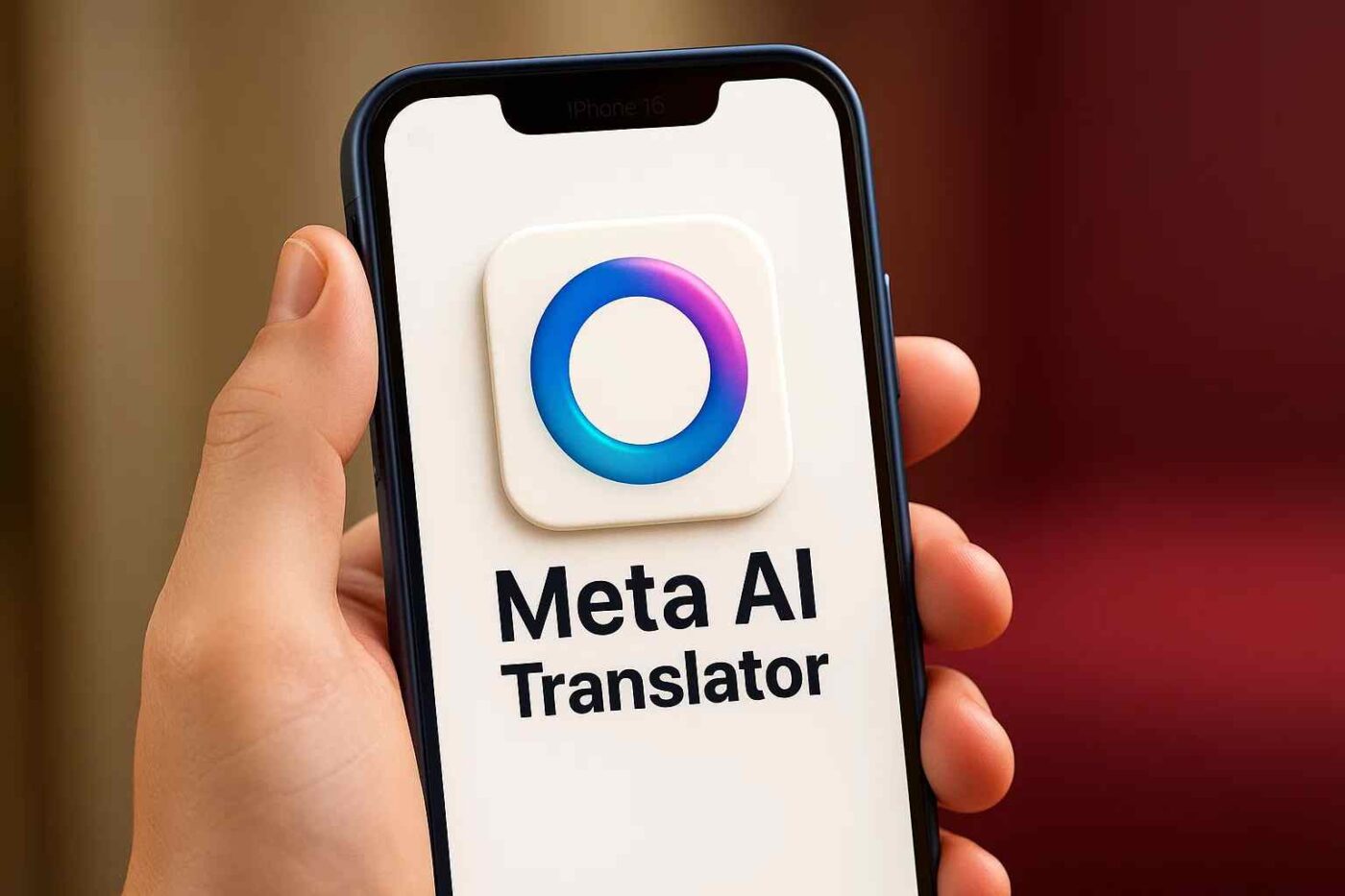How E-Commerce AI and Translation Unlock the European Market

Today, Europe is the number one target of any E-Commerce Store looking to scale, especially with AI… but they kinda keep it a secret. Once you get it, you can unlock massive growth… but it’s not always easy.
Europe is one of the world’s most promising e-commerce frontiers, but it’s also one of the most complex.
With 27 EU countries and 24 official languages, cracking the code to European expansion means more than simply listing your products in euros or offering international shipping.
It requires something far more fundamental: the ability to speak to customers in their own language.
Why does this matter so much?
Because 76% of European consumers prefer to shop in their native language, and 40% won’t make a purchase from a site that doesn’t offer it. Language isn’t just a preference, it’s a dealbreaker.
Fortunately, modern solutions exist.
AI-powered translation and intelligent automation now allow retailers to scale multilingual content, personalize customer interactions, and create seamless shopping experiences across borders.
When implemented strategically, these tools do more than translate, they unlock trust, boost conversions, and help you stand out in a fiercely competitive market.
The Untapped Potential of the European Market
The numbers speak volumes: Europe’s e-commerce economy is set to reach an astounding €5.99 trillion by 2025, with a healthy 7.95% annual growth rate. But more importantly, it’s not just growing, it’s becoming more connected.
In 2024 alone, cross-border e-commerce in Europe hit €275.6 billion, accounting for 36% of the continent’s total online sales. This means over a third of European shoppers are buying from retailers outside their home country, a figure that continues to climb as logistics, payments, and digital platforms evolve.
The European E-Commerce market is expected to reach $18.83 Trillion by 2033.
If cross-border e-commerce continue to grow in the same way, it can reach almost $1T by 2033.
Some countries are already leading the charge:
- Luxembourg: 80% cross-border penetration
- Ireland: 68.6%
- Austria: 49.7%
Meanwhile, German online stores generated €43 billion in cross-border turnover in 2023 alone, underlining just how lucrative the demand for international products has become.
But there’s a catch: the more global the opportunity, the more local your approach needs to be.
That’s because while shoppers are happy to buy across borders, they still expect to interact in their native language. In fact, 75% of consumers say they’re more likely to complete a purchase when the website speaks their language.
This is where language becomes both a barrier and an opportunity.
Retailers who embrace multilingual strategies will find themselves uniquely positioned to capture loyalty, increase conversions, and accelerate growth across the continent.
AI-Powered Translation: Breaking the Language Barrier at Scale
Traditional translation can’t keep up with the pace or complexity of European e-commerce.
That’s where AI-powered translation, specifically Neural Machine Translation (NMT) & Large Language Models (LLMs), changes the game.
These systems go beyond literal word-for-word conversion, they understand context, tone, cultural nuance, and even industry-specific terminology.
The result? Fast, scalable, near-human quality translations that can unlock multiple markets at once.
This demand is fueling explosive growth: the European machine translation market is expected to reach €1.16 billion by 2033, growing at a 13.25% CAGR. Why? Because the business case is clear:
- Speed: Entire product catalogs can be localized in a matter of days, enabling agile launches across multiple regions.
- Cost Efficiency: AI translation can cut costs by up to 40%, with 99.9% accuracy for product content and marketing copy.
- Real-Time Adaptation: AI systems adapt content dynamically based on local behavior, trends, and even seasonal demand.
- Consistency: A unified brand voice is maintained across all languages, preventing fragmented customer experiences.
And for the highest-impact results, many retailers are adopting a hybrid AI-human model, combining the speed and scale of AI with the nuance and expertise of human editors.
The payoff?
30% faster market entry and 25% higher conversion rates when compared to traditional localization alone.
If you’re serious about European expansion, AI translation isn’t just a tool, it’s your competitive advantage.
AI Beyond Translation, Enhancing the European Customer Journey
AI doesn’t just localize content, it transforms the entire customer experience.
From pre-sale interactions to post-purchase support, AI-driven tools are making e-commerce in Europe faster, smarter, and more personalized.
Multilingual Customer Support at Scale
European customers expect quick answers, in their own language.
That’s why AI-powered chatbots are becoming standard. Today, AI chatbots handle 89.2% of customer inquiries, compared to just 71.2% for businesses without them. This leads to:
- 25–30% faster response times
- 2.5 billion man-hours saved annually in support
- Higher satisfaction and loyalty in multilingual environments
These chatbots don’t just translate, they understand intent, tone, and context across languages, offering truly conversational support at scale.
Hyper-Personalized Shopping Experiences
AI also powers product recommendations, which are proving to be revenue drivers.
- Amazon attributes 35% of its revenue to AI-powered suggestions
- ASOS increased email click-through rates by 75% after using AI for personalized content
- Zalando tailors fashion recommendations by analyzing user data, return patterns, and regional trends, delivering truly localized experiences in each market
Dynamic Pricing Tailored to Each Country
One-size pricing doesn’t work in Europe.
AI enables dynamic pricing, adjusting product prices in real time based on demand, competition, and regional buying behavior. Currently, 48% of European e-commerce businesses use AI to support pricing decisions.
Startups like Dynamic Pricing AI are helping retailers:
- Increase revenue by 10–30%
- Reduce operational costs by up to 70%
And as AI becomes standard infrastructure, it’s projected that 95% of customer interactions will be AI-driven by 2025. For European consumers, this means faster, smarter, and more localized journeys, powered end-to-end by intelligent systems.
Looking To Integrate Your E-Commerce In Europe?
It can be extremely time-consuming and it will definitely give you tons of headaches if you’re not prepared.
I have something for you, and it’s 100% free.
The EU Integration Checklist 2.0 is a tool meant to help you integrate in your business in Europe much faster.
If you are not sure about selling in Europe… Think about the fact that the E-Commerce Market in the US is worth only $8.3 Trillion, as of 2025. That’s only 30% compared to the Global E-Commerce Market worth $28 Trillion.
In Europe, the E-Commerce Market is worth $6T, projected to reach $18.8 Trillion by 2033.
Take your time!
Click the image below for the link 👇
Conclusion
Succeeding in European e-commerce isn’t just about having a great product, it’s about speaking the customer’s language, understanding local cultural nuances, and ensuring compliance with complex regulations like GDPR and the EU AI Act.
The winning formula?
AI-powered translation paired with intelligent customer experience systems. This combination enables you to scale quickly, connect authentically, and deliver seamless service across 27 countries and 24 languages.
The European market is vast, interconnected, and increasingly AI-ready.
The technology is here. The demand is growing.
The only question is: Are you ready to unlock it?
Frequently Asked Questions
1. What is the biggest challenge to entering the European e-commerce market?
The top challenge is language and cultural barriers. Research shows 76% of consumers prefer native language content, and 40% won’t buy if it’s unavailable.
2. How accurate is AI translation for product descriptions and marketing content?
When using Neural Machine Translation (NMT) and human post-editing, accuracy can reach up to 99.9%, making it ideal for e-commerce use cases.
3. Which countries should I target first for European expansion?
Begin with the Big 5 markets: Germany, UK, France, Italy, and Spain. These offer the highest e-commerce volume and infrastructure readiness.
4. Is AI customer support effective across multiple languages?
Yes. Modern AI chatbots now handle 89.2% of inquiries and offer multilingual fluency, significantly improving support speed and customer satisfaction.
5. What kind of ROI can I expect from AI-driven localization?
Localized websites can boost conversion rates by up to 70%, and 96% of businesses report positive ROI from their localization investments.






